A wide range of hardware accessories are available for USB oscilloscopes. This FAQ reviews a few of the more popular options including a variety of probes plus wireless synchronization of multiple USB oscilloscopes and chassis that can combine and synchronize USB oscilloscopes with other instruments like arbitrary waveform generators and multimeters.

Probes and more probes
Probes are key tools that extend the utility of USB oscilloscopes. Examples include active and passive differential probes and current probes. Differential probes extend the utility of single-ended input oscilloscopes. Active differential probes are suited for high common-mode voltage measurements. They are available for a range of applications including power circuit measurements and capturing differential signals from serial communication buses. High voltage active differential probes (Figure 1) can handle ±7000 V (DC + peak AC) with a bandwidth of DC to 70 MHz (-3 dB), an attenuation ratio of 100:1/1000:1, and ±2% accuracy. Other models can handle ±700 V (DC + peak AC) and be used with up to 100 MHz signals. Some lower voltage active differential probes rated for ±60 V (DC + peak AC) can handle signals up to 200 MHz.
High-voltage single-ended passive probes are designed for measuring high-voltage ground-referenced signals. High-voltage passive differential probes are also available. For example, you can use a 25:1 attenuating probe to measure voltages up to ±1000 V. Upon connection to the oscilloscope, the PC software automatically detects the probe and adjusts the vertical axis on the display accordingly.
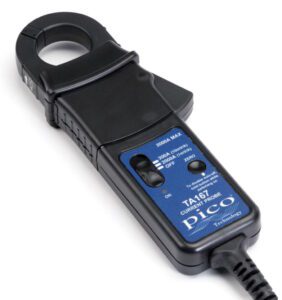
A general-purpose low-voltage differential probe might have a 1:1 voltage ratio and 15 MHz bandwidth. It’s suitable for measuring signals from ±10 mV to ±50 V and has a ground reference clip to eliminate common-mode voltage differences between the probe and the unit being tested. Battery-powered current measurement probes are also available for measuring AC and DC current signals up to several thousand amps (Figure 2).
Wireless synchronization
Wireless synchronization of multiple USB oscilloscopes can be handy in cases where the required number of channels exceeds the capability of the oscilloscopes and where measurements must be taken over wide areas. Wireless synchronization modules can synchronize multiple oscilloscopes up to 400 m apart using an RF wireless trigger connection. The system includes automatic time synchronization of the sample clocks in the connected oscilloscopes. Software on the PC automatically detects how many oscilloscopes are connected and combines the channels into a single virtual instrument.

Go beyond oscilloscopes
Many test applications require more than just an oscilloscope. You can, for example, combine bench instruments such as waveform generators, RF signal generators, or pulse generators with a USB oscilloscope should you need a stimulus signal. Logic analyzers and spectrum analyzers let you measure digital signals or make RF measurements. Figure 3 shows a USB function generator ($195 on Amazon) that comes with its own software. Alternatively, you can use a USB oscilloscope that includes a built-in function generator.
Summary
USB oscilloscopes are highly versatile instruments. A wide range of hardware accessories is available to extend their utility and synchronize their operation in groups of oscilloscopes or in combination with other USB instruments. The available PC software simplifies the use of most accessories.
References
Measurement Instruments, PoLabs
USB Modular Products, Keysight
USB Oscilloscope Accessories, Pico Technology
USB Oscilloscope Accessories, Dataman
Wireless Multi Instrument Synchronization Module, TiePie Engineering
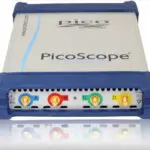
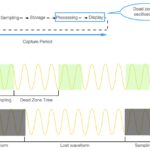
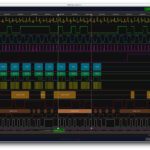
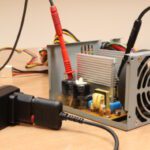
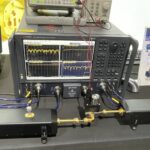

Leave a Reply
You must be logged in to post a comment.